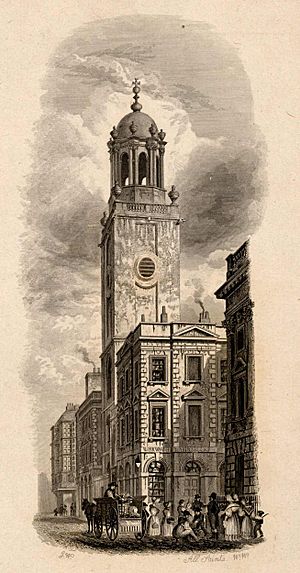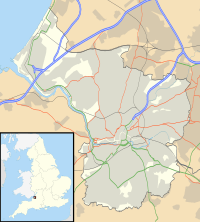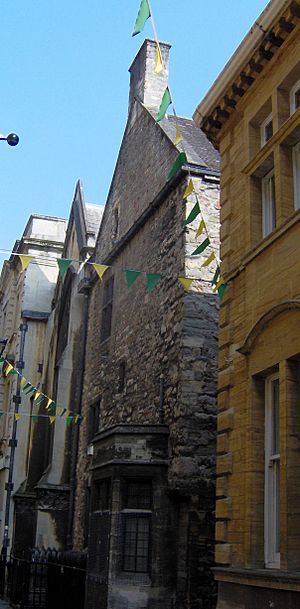All Saints' Church, Bristol facts for kids
Quick facts for kids All Saints' Church, Bristol |
|
|---|---|

Printed engraving of All Saints' from around 1838
|
|
| 51°27′17″N 2°35′36″W / 51.454688°N 2.593394°W | |
| Location | Bristol |
| Country | United Kingdom |
| Denomination | Church of England |
| Architecture | |
| Heritage designation | Grade II* listed building |
| Designated | 8 January 1959 |
| Completed | 12th century |
| Closed | 1984 |
All Saints is an old Anglican church located in Corn Street, Bristol. It is no longer used as a church. For many years, it served as a special education center for the local church area. This center closed down in 2015. The building is very important historically, so it has been given a special status as a Grade II* listed building. This means it's protected because of its special architecture and history.
Contents
History of All Saints Church
The oldest part of the church, the west end of the main hall (called the nave), was built way back in the 12th century. Later, in the 15th century, the eastern part of the nave and the side sections (called aisles) were added. A generous person named Alice Chestre gave a lot of money to help build parts of the church.
The tall tower on the north-east side was added in 1716 by William Paul. George Townesend finished building it. The top part of the tower, called the lantern, was rebuilt in 1807 by Luke Henwood. The front part of the church where the altar is (the chancel) was rebuilt in the mid-19th century.
The First Public Library
In the 15th century, a group called the Kalendars, who were priests and regular people connected to All Saints, built a library. This library was located above the north aisle of the church. In 1464, they made an agreement to let anyone who wanted to study use their books for free. This was a very important step, as it was the first 'public' library in England! Sadly, a fire in 1466 destroyed many of their valuable handwritten books.
Church Design and Monuments
The church is surrounded by walking paths on three sides. It is built right into the other buildings around it. Above the south nave, there is a room for priests. Above the north nave, there was once a coffee room from the Georgian era.
One of the most famous things inside the church is a monument marking the grave of Edward Colston. He was a well-known local figure and a generous person who gave a lot of money to charities in Bristol. The monument was designed by a famous architect named James Gibbs and carved by John Michael Rysbrack.
Archives
Records for All Saints' Church, Bristol, including old baptism, marriage, and burial lists, are kept at Bristol Archives.
See also
- Grade II* listed buildings in Bristol
- Churches in Bristol



